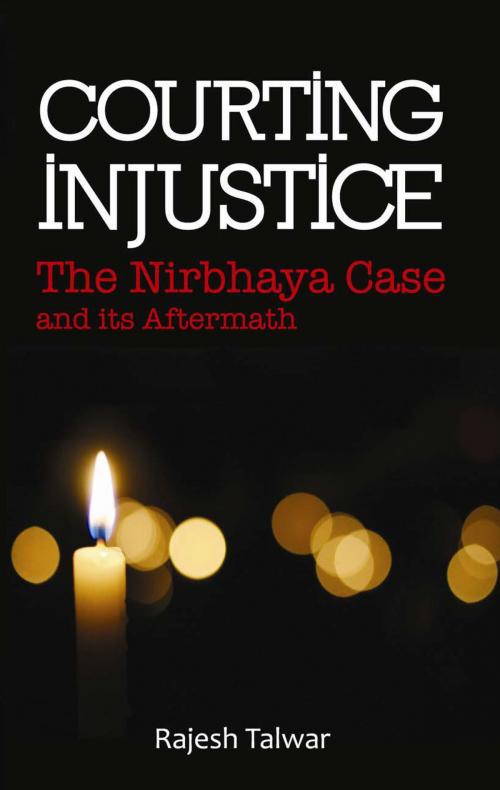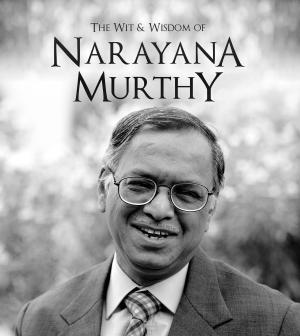| Author: | Rajesh Talwar | ISBN: | 9789381398586 |
| Publisher: | Hay House | Publication: | December 1, 2013 |
| Imprint: | Hay House India | Language: | English |
| Author: | Rajesh Talwar |
| ISBN: | 9789381398586 |
| Publisher: | Hay House |
| Publication: | December 1, 2013 |
| Imprint: | Hay House India |
| Language: | English |
In this partnership between so-called equals, which can be compared to a polyandrous marriage, the Supreme Court is the woman and Parliament and the Executive her two husbands, one more loutish that the other, depending on your point of view.
In the Nirbhaya case too the gap between theory and law has been highlighted. Following the terrible episode, (and even before) there has been continual and great improvement in the substantive laws for both women as well as children who have been victims of sexual violence. And yet despite their being so much publicity on the case, the author argues that, concretely, although there has been improvement in the laws themselves, we are nowhere near better enforcement or implementation. Even after the institution of a fast track trial, and with the nation’s attention focused on it, the Nirbhaya case still dragged on and it took more than nine months for the trial court to reach a verdict. And, as the author explains there are still potentially further delays waiting at the level of the superior courts, the High Court certainly and the Supreme Court too, quite possibly. As the author goes on to show in this well argued book, a woman who is the victim of a sex related crime ‘courts injustice’ whenever she comes to a court, be she the victim of a rape, an acid attack, of sexual harassment; the mother or father of such a victim or be it even any ordinary person struggling to find justice.
Our courts, particularly the Supreme Court is performing the function of a nagging wife. Time and again she pulls up the lazy, good-for-nothing husbands (read ‘failure of governance’). And what does either husband do? He goes for a walk, ignoring the wife’s anguished screams even as they follow him. If she complains too much, he tells himself, he’ll see to it that she doesn’t get the silk sari and other goodies she wants (read ‘promotions’, ‘post retirement assignments’, etc). It is only one of the ways he ensures that she doesn’t step too much out of line. All wives nag, he consoles himself. Nagging here and there is tolerable but she must make sure that he gets his meals on time (read ‘doesn’t bar him from contesting elections even if there are a dozen or more criminal cases pending against him’). Meanwhile the overzealous wife doesn’t realize that while she rails and rants against the erring ways of her husband, the dishes are piling up in the kitchen. And the maid has gone away for six months and the dishes, they are piling up (read, the arrears are accumulating)!
The time has come. It cannot continue to remain ‘business as usual’. There will be justice for Nirbhaya. Our ‘brave heart’ will also bring justice and relief to all her sisters. And possibly, even to the rest of us.
In this partnership between so-called equals, which can be compared to a polyandrous marriage, the Supreme Court is the woman and Parliament and the Executive her two husbands, one more loutish that the other, depending on your point of view.
In the Nirbhaya case too the gap between theory and law has been highlighted. Following the terrible episode, (and even before) there has been continual and great improvement in the substantive laws for both women as well as children who have been victims of sexual violence. And yet despite their being so much publicity on the case, the author argues that, concretely, although there has been improvement in the laws themselves, we are nowhere near better enforcement or implementation. Even after the institution of a fast track trial, and with the nation’s attention focused on it, the Nirbhaya case still dragged on and it took more than nine months for the trial court to reach a verdict. And, as the author explains there are still potentially further delays waiting at the level of the superior courts, the High Court certainly and the Supreme Court too, quite possibly. As the author goes on to show in this well argued book, a woman who is the victim of a sex related crime ‘courts injustice’ whenever she comes to a court, be she the victim of a rape, an acid attack, of sexual harassment; the mother or father of such a victim or be it even any ordinary person struggling to find justice.
Our courts, particularly the Supreme Court is performing the function of a nagging wife. Time and again she pulls up the lazy, good-for-nothing husbands (read ‘failure of governance’). And what does either husband do? He goes for a walk, ignoring the wife’s anguished screams even as they follow him. If she complains too much, he tells himself, he’ll see to it that she doesn’t get the silk sari and other goodies she wants (read ‘promotions’, ‘post retirement assignments’, etc). It is only one of the ways he ensures that she doesn’t step too much out of line. All wives nag, he consoles himself. Nagging here and there is tolerable but she must make sure that he gets his meals on time (read ‘doesn’t bar him from contesting elections even if there are a dozen or more criminal cases pending against him’). Meanwhile the overzealous wife doesn’t realize that while she rails and rants against the erring ways of her husband, the dishes are piling up in the kitchen. And the maid has gone away for six months and the dishes, they are piling up (read, the arrears are accumulating)!
The time has come. It cannot continue to remain ‘business as usual’. There will be justice for Nirbhaya. Our ‘brave heart’ will also bring justice and relief to all her sisters. And possibly, even to the rest of us.















